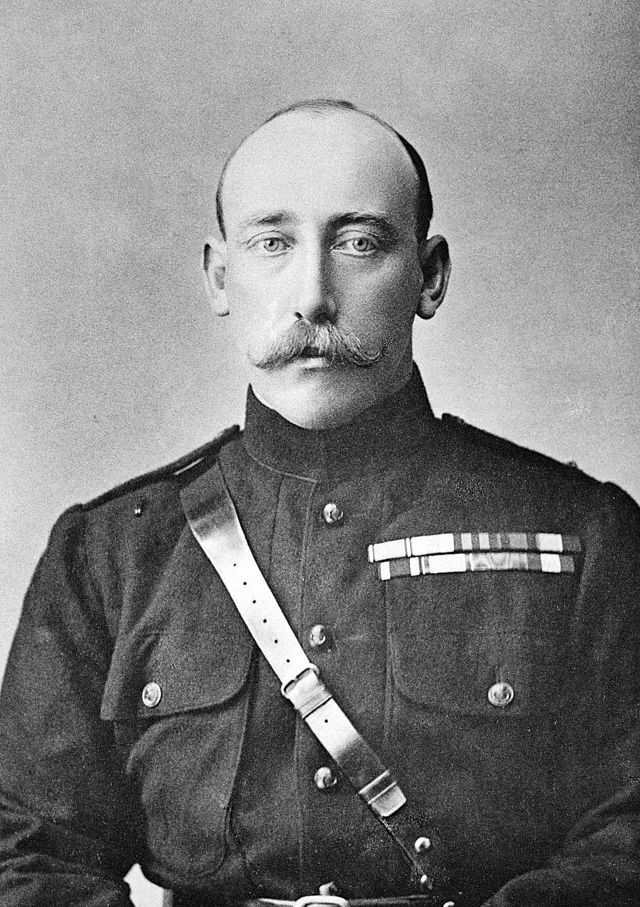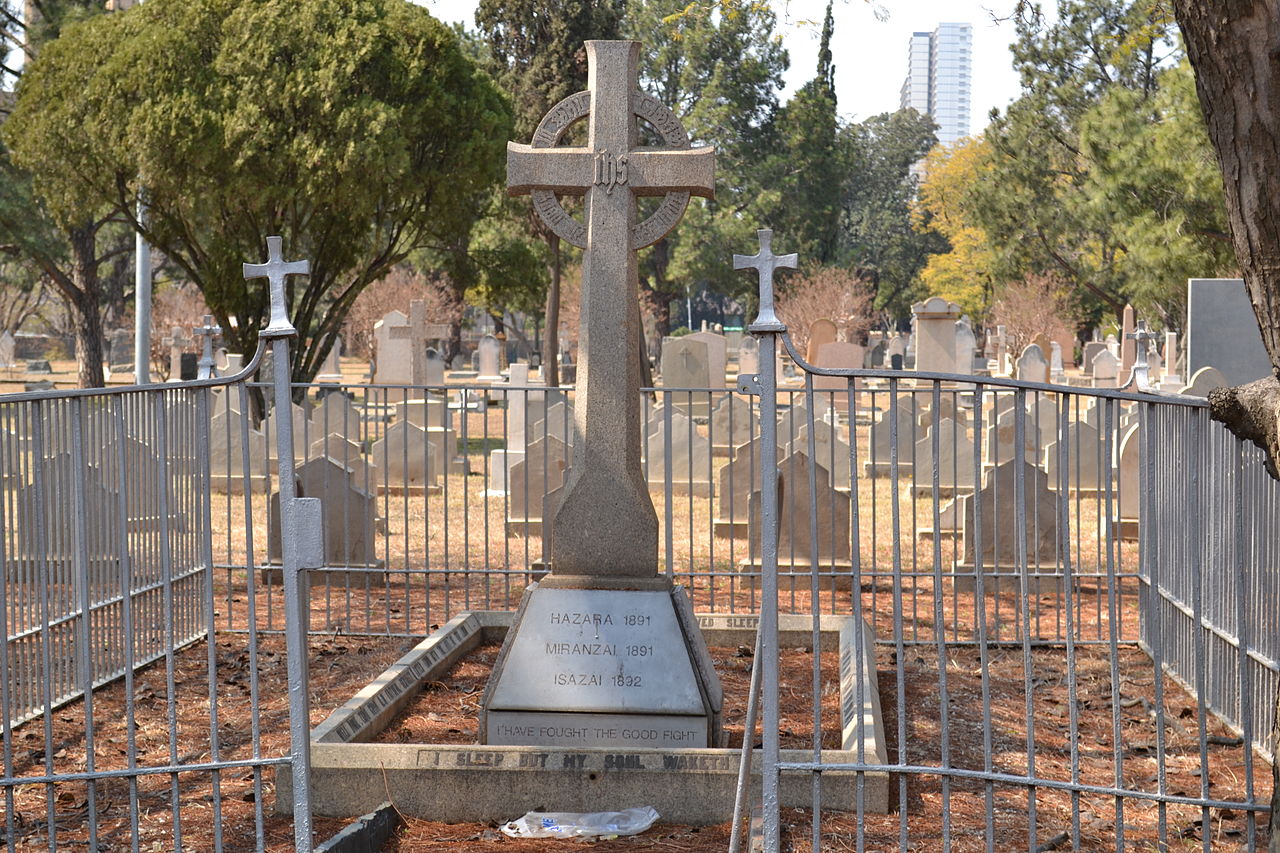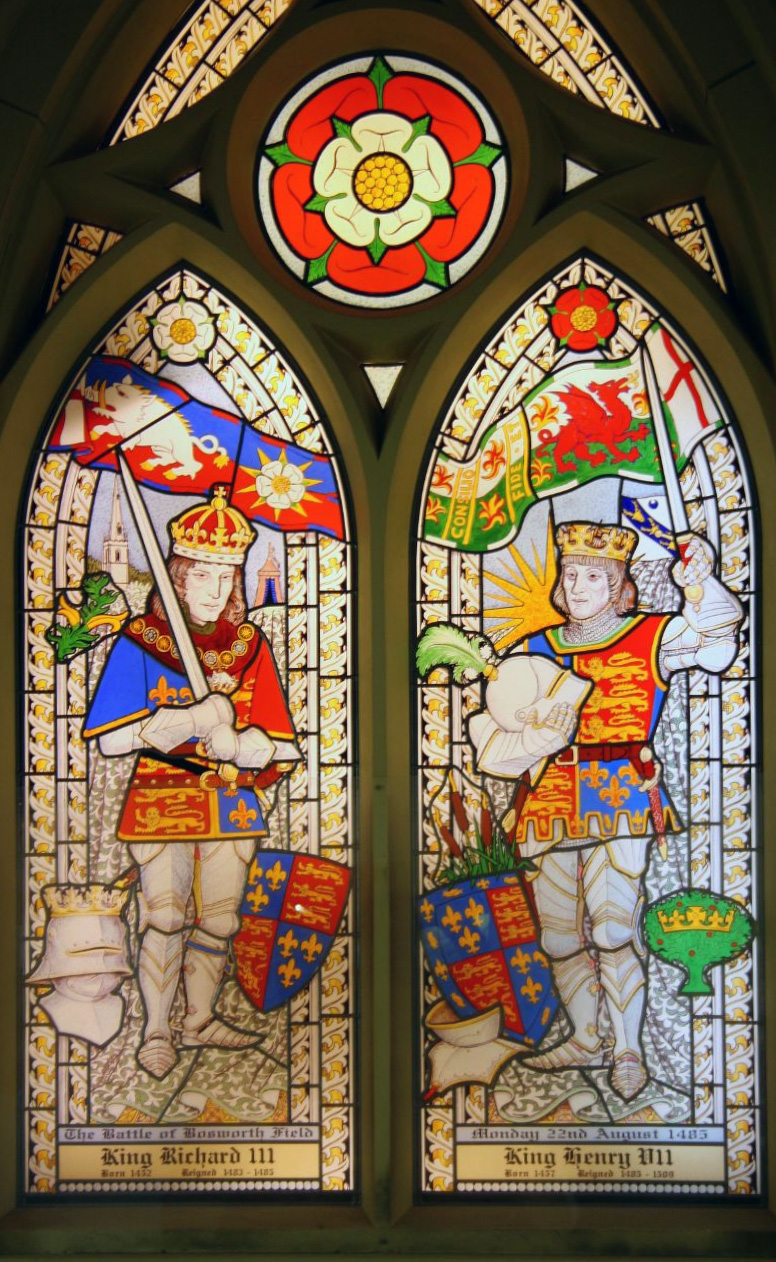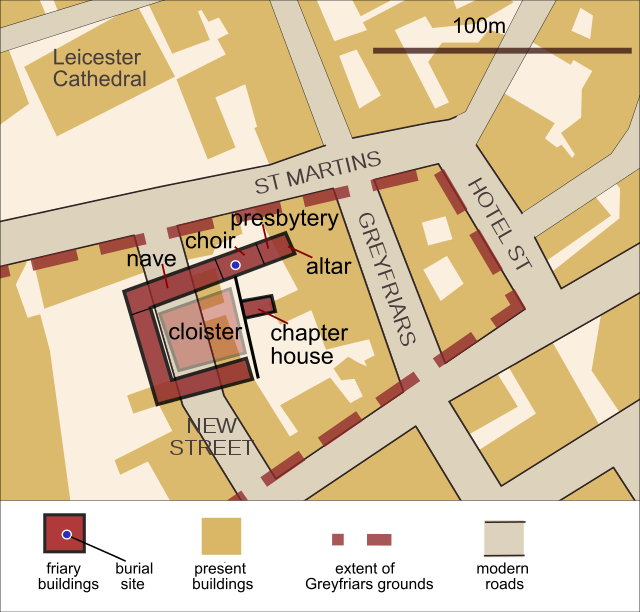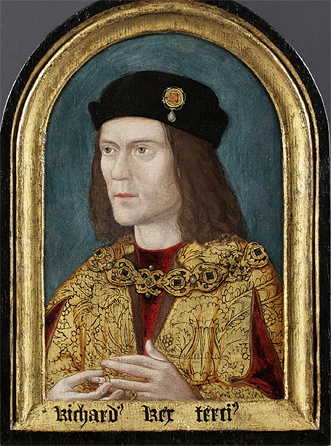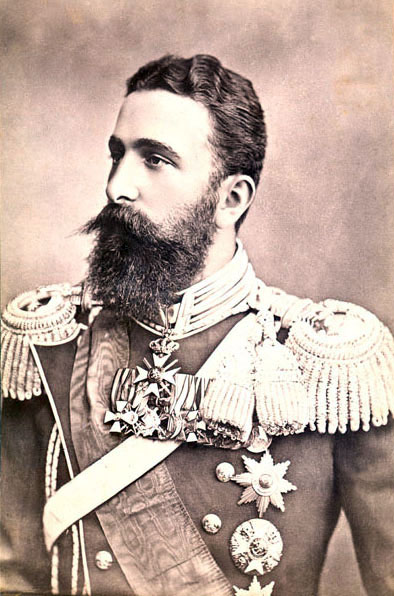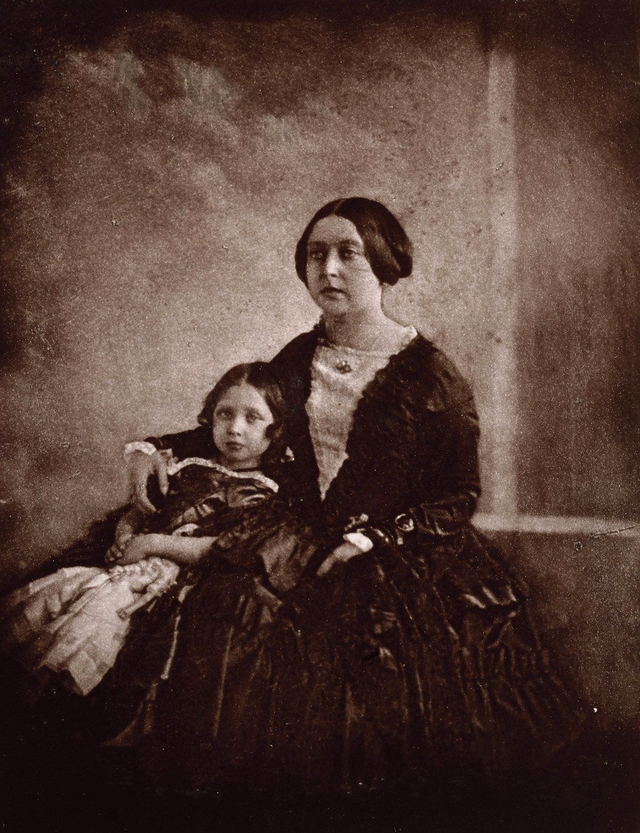by Scott Mehl © Unofficial Royalty 2015
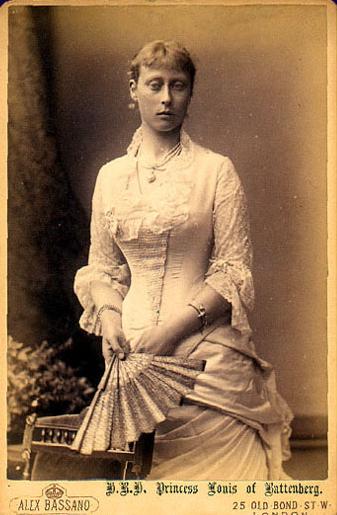
Princess Victoria of Hesse and by Rhine, Marchioness of Milford Haven. photo: Wikipedia
Princess Victoria of Hesse and by Rhine, Marchioness of Milford Haven is often overlooked in history due to the accomplishments and fame of her family members. Two sisters became Russian royalty and were killed during the Russian Revolution, a son became one of the most decorated military heroes in British history, and a grandson married the future Queen Elizabeth II. However, Victoria herself is quite fascinating in her own right.
Princess Victoria Alberta Elisabeth Mathilde Marie of Hesse and by Rhine was born in the Tapestry Room at Windsor Castle in Windsor, England, on April 5, 1863, in the presence of her grandmother and namesake Queen Victoria. The two Victorias shared a very close bond that would last their entire lives. The younger Victoria was the eldest child of Princess Alice of the United Kingdom and Grand Duke Ludwig IV of Hesse and by Rhine. It is through Princess Victoria of Hesse and by Rhine that the British Royal Family is not only the descendants of Queen Victoria’s son King Edward VII but also of her daughter Princess Alice. Princess Alice of the United Kingdom → Princess Victoria of Hesse and by Rhine → Princess Alice of Battenberg → Prince Philip, Duke of Edinburgh → King Charles III of the United Kingdom
Princess Alice holding the young Princess Victoria
On April 27, 1863, in the Green Drawing Room at Windsor Castle, Victoria was christened in the arms of her grandmother and namesake by the Lutheran Hessian court chaplain who had come to Windsor Castle for the occasion.
Her godparents were:
Victoria had six younger siblings:
- Elisabeth of Hesse and by Rhine, Grand Duchess Elizabeth Feodorovna of Russia (1864-1919), married Grand Duke Sergei Alexandrovich of Russia, no children
- Irene of Hesse and by Rhine, Princess of Prussia (1866-1953), married her first cousin Prince Heinrich of Prussia, had three sons
- Ernst Ludwig, Grand Duke of Hesse (1868-1937), married (1) his first cousin Princess Victoria Melita of Saxe-Coburg and Gotha, had one daughter, divorced (2) Princess Eleonore of Solms-Hohensolms-Lich, had two sons
- Prince Friedrich of Hesse and by Rhine (1870-1873), hemophiliac, died after a fall
- Alix of Hesse and by Rhine, Empress Alexandra Feodorovna of Russia (1872-1918), married Nicholas II, Emperor of All Russia, had four daughters and one son
- Princess Marie of Hesse and by Rhine (1874-1878), died from diphtheria
Victoria was educated privately, as was typical for the times, and was quite intellectual. She and her sister, Ella being so close in age, were educated together and shared a room. They would remain extremely close until Ella’s tragic death in 1918. As a child, Victoria developed a love of books, becoming an avid reader, and at an early age began to keep a record of all the books she read. This continued for the rest of her life.

Princess Victoria and her three surviving sisters mourning their mother, 1879; Credit – Royal Collection Trust
In November 1878, Victoria fell ill with diphtheria. The illness quickly spread to most of her family, with some of them dangerously sick. On the 16th of the month, her youngest sister, May, succumbed to diphtheria and died. Less than a month later, her mother, who had nursed the family back to health, also fell victim and died on December 14, 1878. Alice’s death devastated the family, and Victoria found herself suddenly placed in the role of surrogate mother to her younger siblings. She also began to serve as a companion to her father and later became the hostess for many of his official duties.
On April 30, 1884, in the chapel of the Old Palace in Darmstadt, Grand Duchy of Hesse and by Rhine, now in Hesse, Germany, Victoria married her father’s first cousin, Prince Louis of Battenberg, the son of Prince Alexander of Hesse and by Rhine, and Princess Julia of Battenberg (born Countess Julia Hauke). Victoria’s father was personally against the marriage, primarily because he would be losing his eldest daughter and companion, and also because his cousin did not have the financial resources that most other royal husbands would be able to provide. Victoria, however, would have none of the reservations her father had, and being fiercely independent, made it clear that she intended to marry with or without her father’s blessing. In the end, Ludwig put his daughter’s happiness ahead of his own. The wedding, which had been postponed a few weeks due to the death of Victoria’s uncle, Prince Leopold, Duke of Albany, was attended by many of the extended family from Europe, including Queen Victoria, and The Crown Prince and Crown Princess of Prussia (Victoria’s aunt). The couple honeymooned for a week at Heiligenberg before returning to England where Louis was serving in the Royal Navy. Prince Louis had become a naturalized British subject in 1868, having joined the British Navy. They leased Sennicotts, a country home in Chichester, England as their first home.

Standing: Princess Alice, Prince George; Sitting L to R: Princess Louise, Prince Louis, Princess Victoria holding Prince Louis; Credit – Wikipedia
Victoria and Louis had four children:
- Princess Alice of Battenberg, Princess of Greece (1885-1969) – married Prince Andrew of Greece, had five children, including Prince Philip, Duke of Edinburgh
- Princess Louise, later Lady Louise Mountbatten, Queen of Sweden (1889-1965) – married King Gustaf VI Adolf of Sweden, no children
- Prince George, 2nd Marquess of Milford Haven (1892-1938) – married Countess Nadejda Mikhailovna de Torby, had two children
- Prince Louis, later Louis Mountbatten, 1st Earl Mountbatten of Burma (1900-1979) – married Edwina Ashley, had two children
Victoria’s life moved around quite a bit, with her husband taking up residence in different places based on his Navy assignments. In 1896, at her husband’s urging, she brought on Cecil Nona Kerr as a lady-in-waiting. The two became close companions and friends, and Nona helped with raising the children. Nona stayed with Victoria until her own marriage in 1915, but the two remained lifelong friends.

Victoria (far right) with her siblings and their spouses at the wedding of her daughter Alice to Prince Andrew of Greece, 1903. Photo: Wikipedia
In addition to moving around with her husband, Victoria was constantly on the move, visiting relatives and friends around the world. She made extended visits back to Darmstadt, visiting her brother Ernie, as well as visiting her sister Irene in Prussia, and her sisters Ella and Alix in Russia. It was on one of these Russian visits in 1914 that Victoria received an urgent telegram from her husband, instructing her to come home immediately, as World War I was breaking out in Europe. Accompanied by her daughter Louise, and Nona Kerr, Victoria quickly made arrangements to return home, and assuming Russia would be safe, left all of her jewels with Alix for safekeeping. Sadly, it would be the last time she would see either Ella or Alix, as both were killed by the Bolsheviks in 1918.
Victoria returned home to Kent House, on the grounds of Osborne House on the Isle of Wight, England. The property had been inherited by her aunt Princess Louise, Duchess of Argyll upon Queen Victoria’s death. In 1913, Louise gave the home to Victoria and Louis. Having leased properties for their entire marriage, Kent House was the only home in the United Kingdom that the couple ever owned.
1914 saw more changes for the couple. Prince Louis, who had spent his entire life in the British Royal Navy, and had earned the rank of First Sea Lord, was forced to resign due to widespread anti-German sentiment. Despite protests from King George V, Louis resigned from the position in October 1914. While still remaining in the Royal Navy, he spent his remaining years in basic retirement at Kent House, having been assured a return to service following the war.
Due to anti-German sentiment, in 1917, King George V changed the name of the royal house to Windsor and asked all of his relatives to relinquish their German titles. Giving up their Battenberg titles, the couple took on the surname Mountbatten, the anglicized version of Battenberg. Victoria was offered the option to retain her style of Princess Victoria (without the Hesse and by Rhine), but she declined this, stating that her husband’s title, whatever it was, was good enough for her. Louis was created Marquess of Milford Haven, having initially been offered a Dukedom, but declining as he felt unable to meet the financial requirements and lifestyle of the title. He was the only one of the relatives offered a dukedom, most likely in recognition of the King’s deep respect for both Louis and Victoria. Victoria, however, was disappointed with her cousin for bringing about the name change. To her, it was just another slap in the face to her husband, who had devoted his life to Britain. They would remain close, but she never fully forgave him.
The new Marquess and Marchioness continued to live a quiet retirement at Kent House. However, after the war, Louis was informed that he would not be recalled to service, and formally retired from the Royal Navy in January 1919. Soon, due to financial reasons, Victoria sold Kent House. They were also forced to sell Schloss Heiligenberg, which Louis had inherited from his father, earning just a fraction of its value. Nona Kerr’s husband, Lt Col Crichton, offered them a home called Fishponds on the grounds of his home Netley Castle in Netley, Hampshire, England. They settled there for the next several years.
Prince Louis, Marquess of Milford Haven died suddenly on September 11, 1921, in London, England. Victoria was devastated. Their marriage had truly been a love match. Concerned for her financial position, King George offered Victoria Frogmore Cottage in Windsor, but she declined, having already paid up the lease on Fishponds until 1922. At that point, she did accept his offer of apartments in Kensington Palace in London, England. After extensive renovations overseen by Victoria and Queen Mary (the space was formerly the Chapel Royal until 1901), Victoria moved into Apartment 7 in the winter of 1922 and would remain there until her death.
By the 1930s, Victoria had become a surrogate mother to her grandson Prince Philip of Greece and Denmark, the future husband of Queen Elizabeth II of the United Kingdom. Her daughter Alice had suffered several breakdowns and spent many years institutionalized. Victoria and her two sons, took over the care of the young Philip, overseeing his education and social ventures. Victoria continued her travels, seemingly always off visiting some relative or another. She continued to spend time in Darmstadt with Ernie and his family, often accompanied by her sister Irene.
The late 1930s would see more tragic losses in Victoria’s life. 1937 saw the death of her brother Ernie, followed weeks later by the tragic plane crash that killed Ernie’s widow, their elder son, his wife (also Victoria’s granddaughter), and their two young sons. The following year, Victoria’s son George died of bone cancer. The losses took a heavy toll on Victoria.
When World War II came, Victoria spent much of her time at Windsor Castle with King George VI and his family after Kensington Palace had been bombed. During this time, her grandson Philip made frequent visits which also allowed him to spend time with his future wife. So it was with great pleasure that Victoria welcomed the announcement of the engagement of her grandson Philip to Princess Elizabeth in 1947. Despite the loss of her titles and the hardships she had endured in life, she found great satisfaction in knowing that her descendants would one day occupy the throne of the United Kingdom.
Christening of the future King Charles III with his parents and godparents: Seated left to right: Dowager Marchioness of Milford Haven (born Victoria of Hesse and by Rhine), the then Princess Elizabeth holding the infant Charles and Queen Mary. Standing left to right: Patricia Knatchbull, Baroness Brabourne, Prince Philip, Duke of Edinburgh (representing godparent Prince George of Greece), King George VI, David Bowes-Lyon, Alexander Cambridge, 1st Earl of Athlone (representing godparent King Haakon of Norway), and Princess Margaret
On December 15, 1948, Victoria served as one of the godparents to her great-grandson, the future King Charles III. Once a vibrant woman, she appears quite tiny and frail in the photos. It would be one of the last official functions that she attended. Over the next two years, Victoria’s health began to diminish. She spent most of her time at Kensington Palace or Broadlands, her son Louis’ home in Hampshire. During the summer of 1950, while at Broadlands, Victoria developed bronchitis, and suffered a heart attack. Sensing the end was near, she insisted on returning home to Kensington Palace. It was here, on the morning of September 24, 1950, that she passed away, surrounded by her three surviving children. Four days later, she was buried beside her husband on the grounds of St Mildred’s Church in Whippingham on the Isle of Wight.

St Mildred’s Church, Whippingham. photo: Wikipedia
This article is the intellectual property of Unofficial Royalty and is NOT TO BE COPIED, EDITED, OR POSTED IN ANY FORM ON ANOTHER WEBSITE under any circumstances. It is permissible to use a link that directs to Unofficial Royalty.
Recommended Book
- Advice to My Grand-daughter: Letters from Queen Victoria to Princess Victoria of Hesse – compiled by Richard Hough
